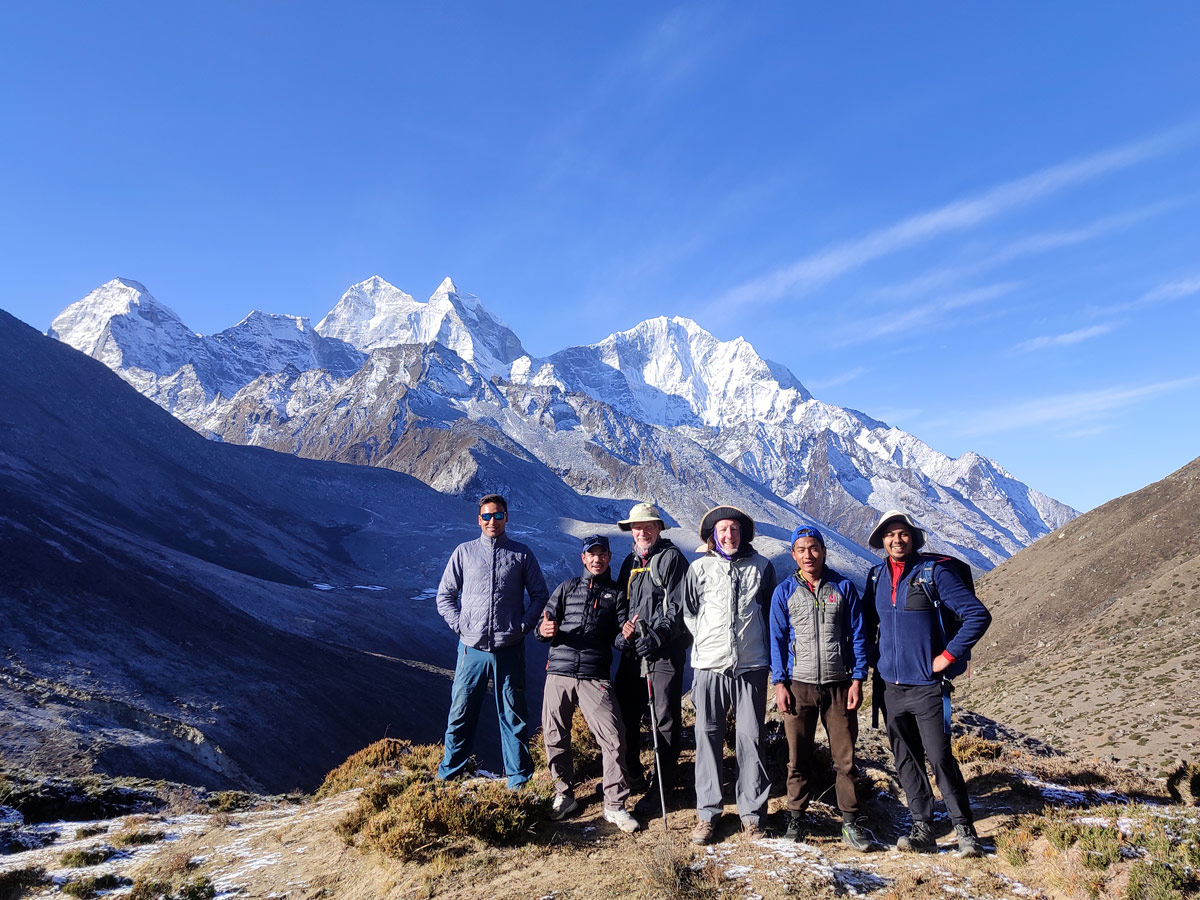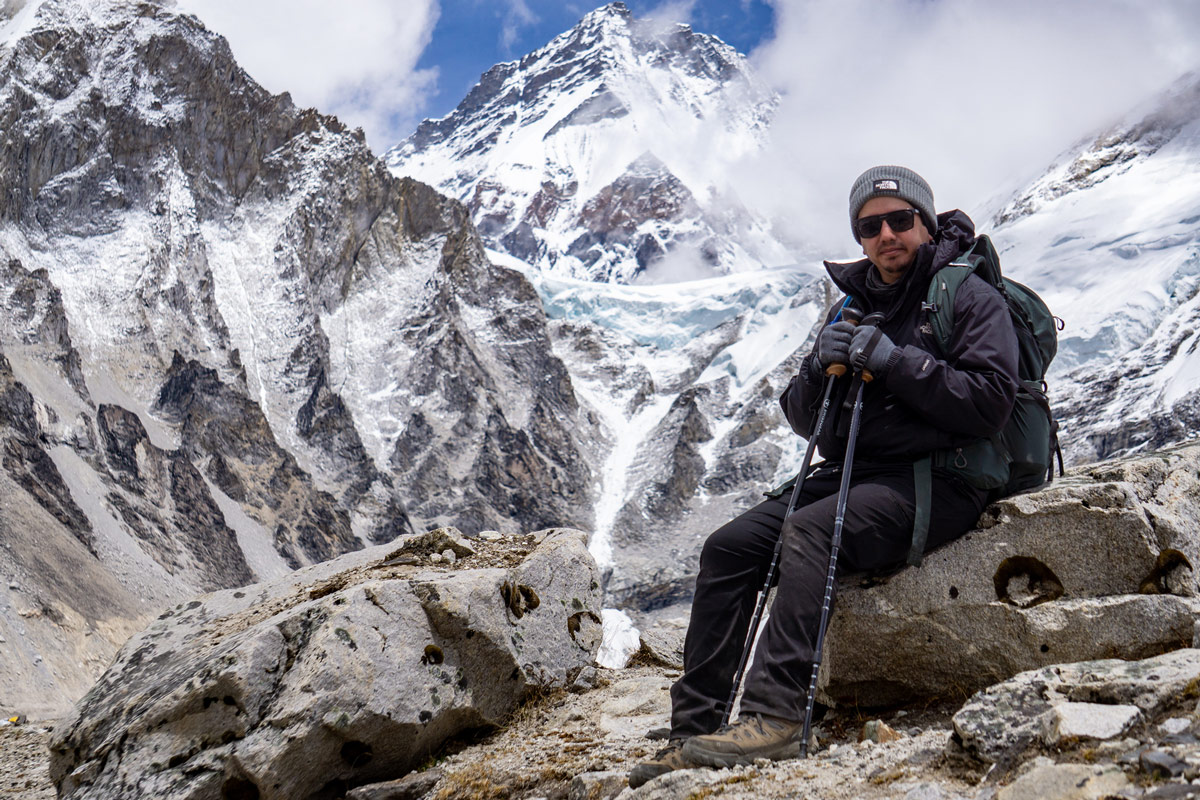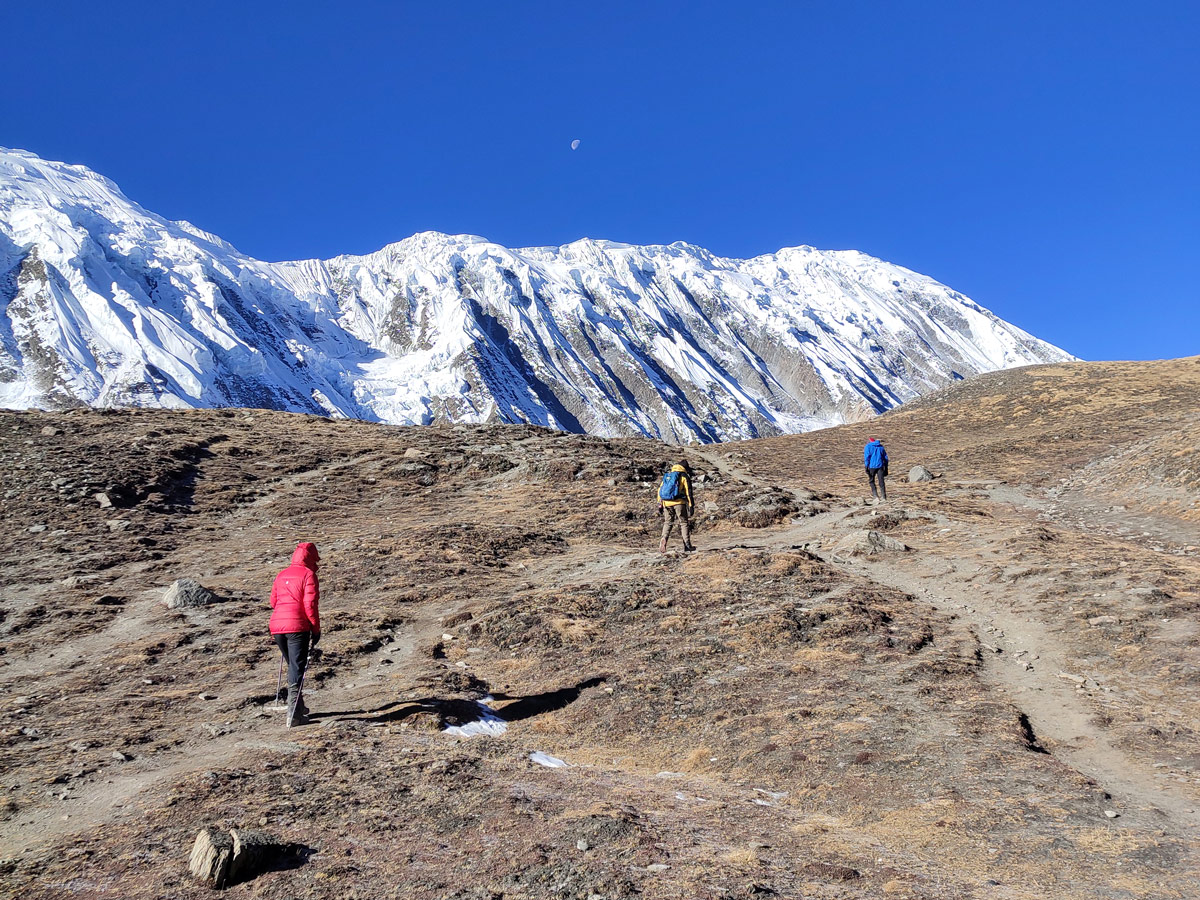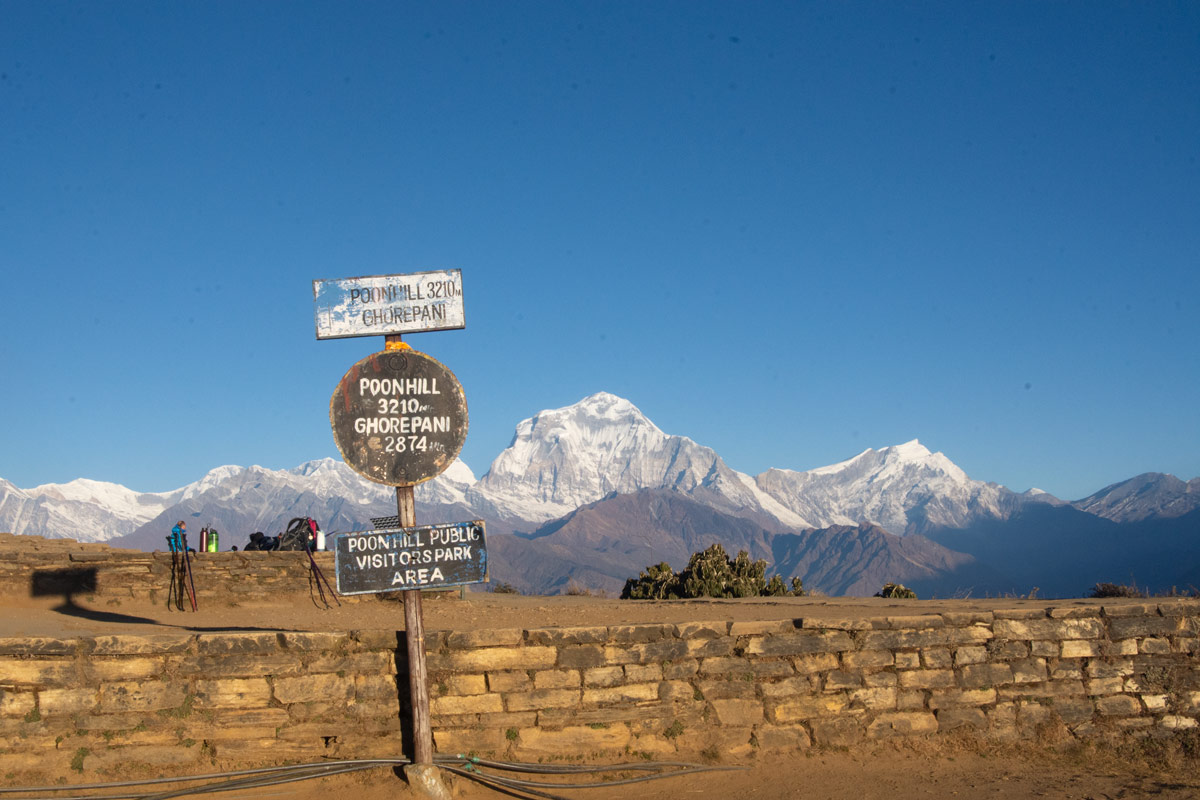The Himalayas of Nepal and the trails reaching them are considered the safe haven for trekkers across the world. If you are a trekking enthusiast, you definitely need no introduction of how stunning and adventurous the trekking trails of Nepal are.
However, these trails can dramatically get much more beautiful if you pick the right season to explore them. And there is no better time to trek in Nepal than during the months of spring, i.e. from March to May, as these months bring in renewal in the country.
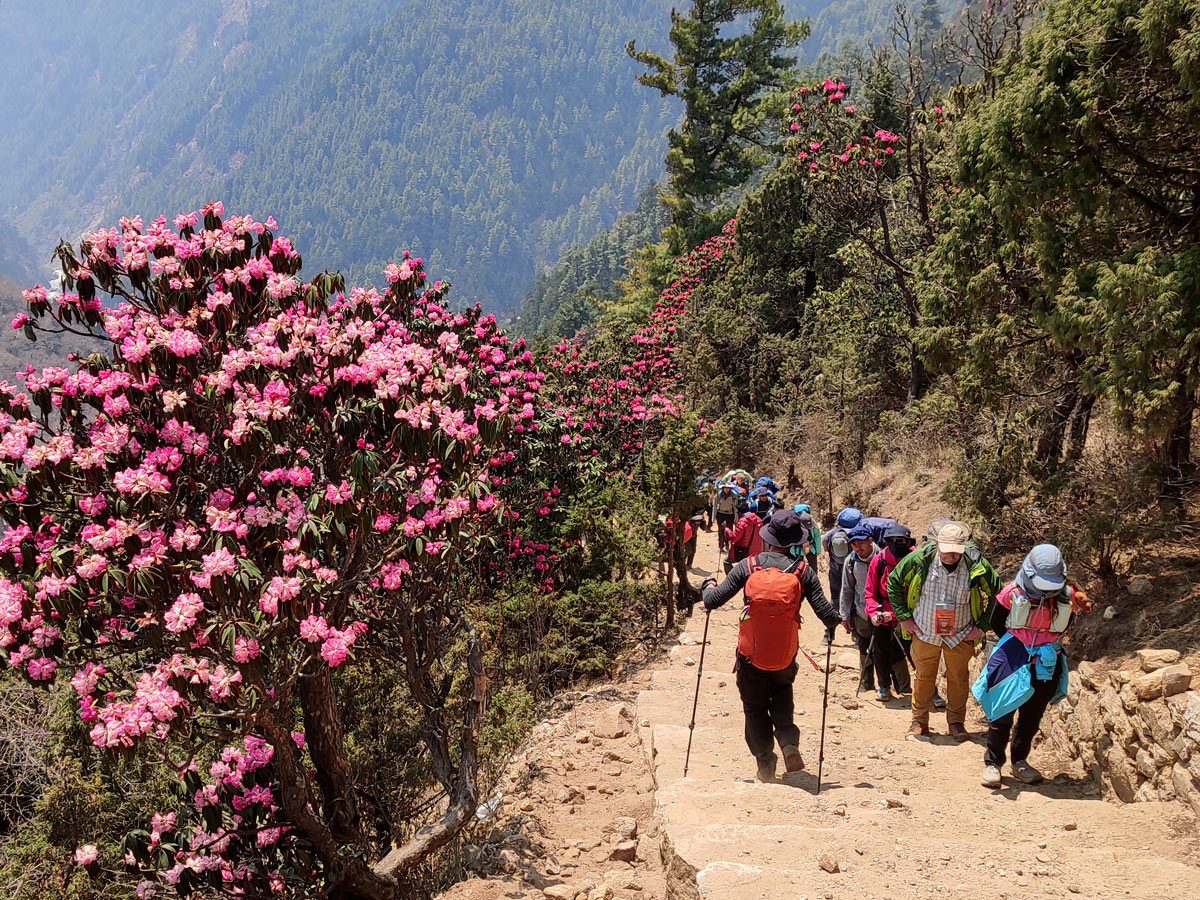
Imaging Nepal in Spring: a canvas painted with vibrant rhododendron blooms, a symphony of birdsong filling the air, and crystal-clear skies revealing breathtaking Himalayan vistas.
The moderate weather conditions, vibrant flora, and major cultural festivals make spring trekking an experience of a lifetime. Trekkers often fall in love with the charm of Nepal during spring, and you should give it a shot too.
Therefore, in this blog, we have compiled some of the best spring treks in Nepal along with essential trekking gear, potential challenges, and travel tips to make your spring trek unforgettable.
Why Trek in Nepal During Spring?
We have heard countless times that the best time to trek in Nepal is during Spring (March to May). However, what really is all the hype about trekking in Nepal during spring and what makes it so appealing? Well, let’s find out.
Favorable Weather Conditions
One of the biggest challenges that you might face while trekking in the high-altitude realms of trekking in Nepal is usually the harsh and extreme weather conditions.
Sometimes the weather is too cold, sometimes too much rain on the trails, and sometimes lots of snowfall which can make navigating the trails difficult. However, spring season offers the most pleasant and stable weather condition for your trek.
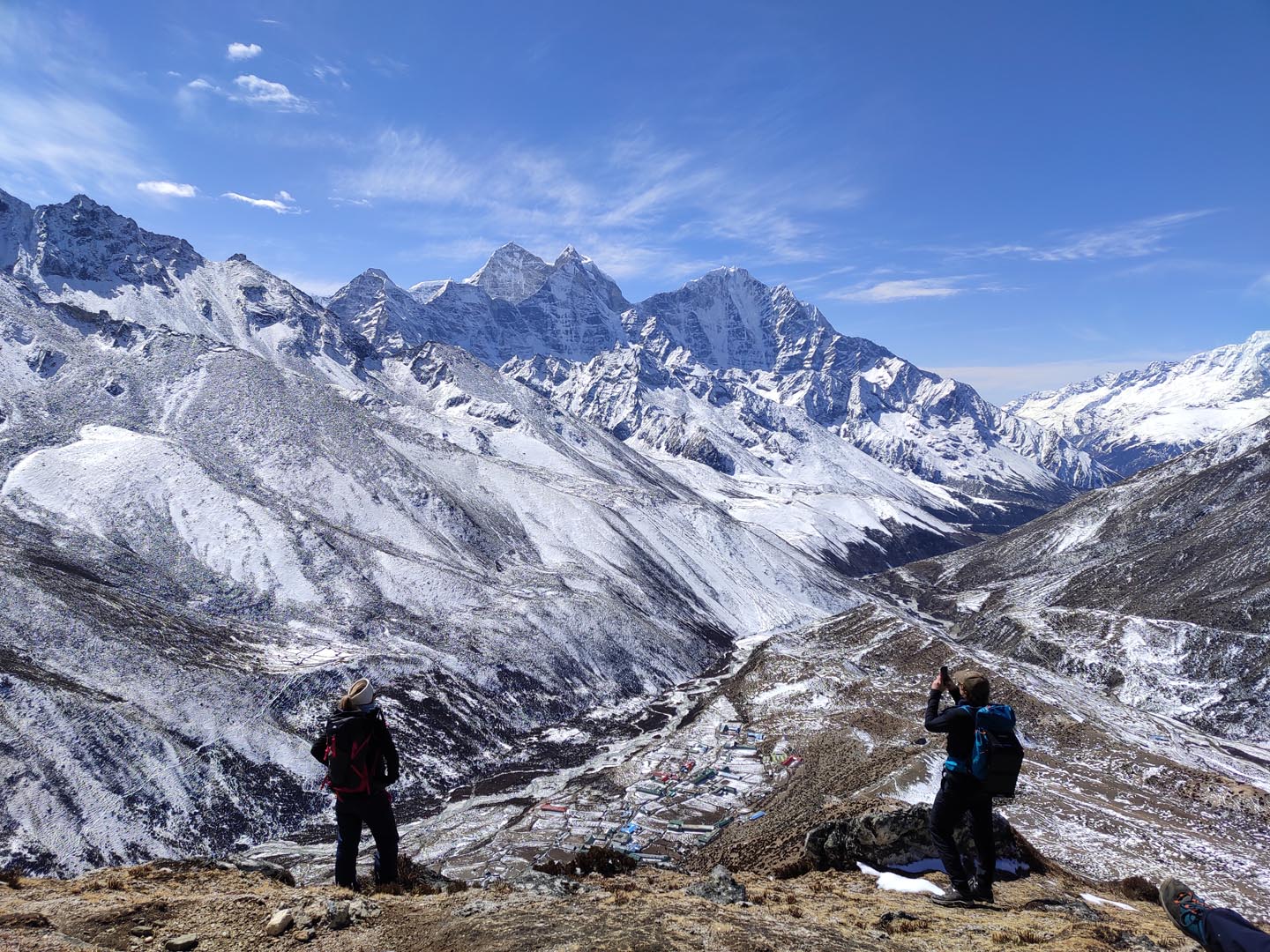
Temperatures are mild during the day time and they range between 10 to 20 degrees Celsius in mid altitudes and get colder as the altitude increases. While nights are still cold, they are much less frigid and harsh as compared to winter.
The daylight hours are longer and they allow more time for you to explore the trekking trails. The risk of snowfall and rainfall is also very less which allows you to enjoy to the fullest. You will also be able to enjoy the left-over snow from winter during early spring treks.
Stunning Natural Beauty
You will be treated to a colorful canvas while trekking in Nepal during trekking as you will be able to see lots of lush green surrounding you and patches of colorful rhododendrons with hues of red, pink, and white blooming in between.
As the forests and meadows are drowning in lush green, the wildlife activities increase. This means more chance of spotting unique and rare wildlife during your trek, especially within national parks and conservation areas.
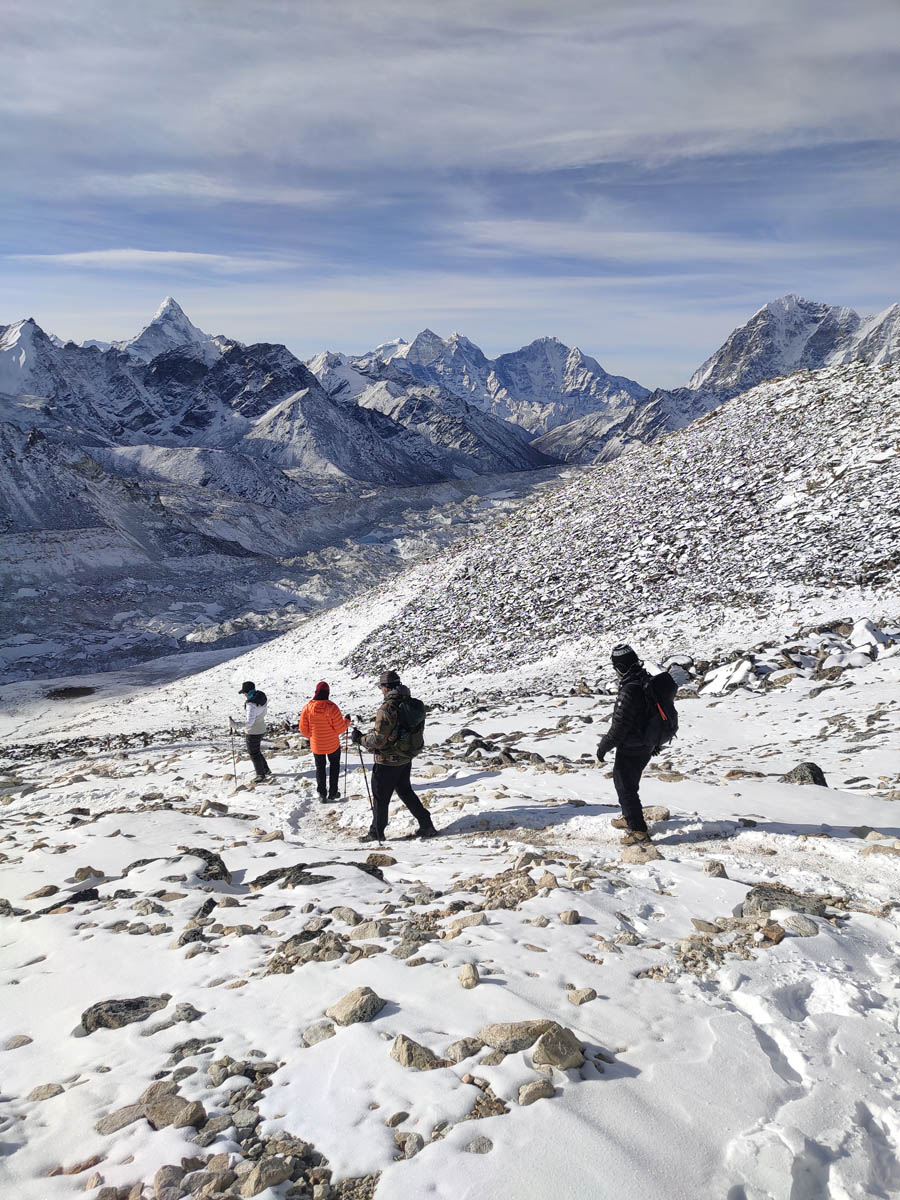
There are no clouds blocking your perfect view of the snowcapped Himalayas and you can enjoy the panoramas all you want. This is a photographer’s dream and allows trekkers to fully appreciate the grandeur of the Himalayas along with the riot of colors.
Best Time for Cultural Experiences
With the commencement of spring season, many festivals and celebrations kickstart in Nepal. These vibrant festivals offer trekkers a chance to experience many local traditions first hand.
Some of the main festivals in Spring include Basanta Panchami, Holi, Shivaratri, Ghode Jatra, Ram Nawami, and Buddha Jayanti which are celebrated by the locals with lots of joy.
Less Risks Related to Weather
The trekking trails of Nepal can be enjoyable during other seasons too, but they come with significant challenges related to weather. The trails during monsoon can experience heavy rainfall and increases the chances of injury and trail blockage.
Heavy snowfall during winters can also lead to trail blockage and sometimes avalanche too. In Spring, the trail is rather safe as it is dry and experiences comparatively consistent temperatures.
Best Spring Treks in Nepal
Everest Base Camp Trek
Spanning over a duration of 12 to 14 days, the Everest Base Camp Trek is located in Sagarmatha National Park and is one of the most classic trekking routes in the world.
Taking you to the base of the highest peak in the world, i.e. Mt. Everest, this trek is a dream adventure for all trekkers. This trek begins with a thrilling flight to Lukla and crosses Sherpa dominant areas like Namche Bazaar, Dingboche, and Tengboche.
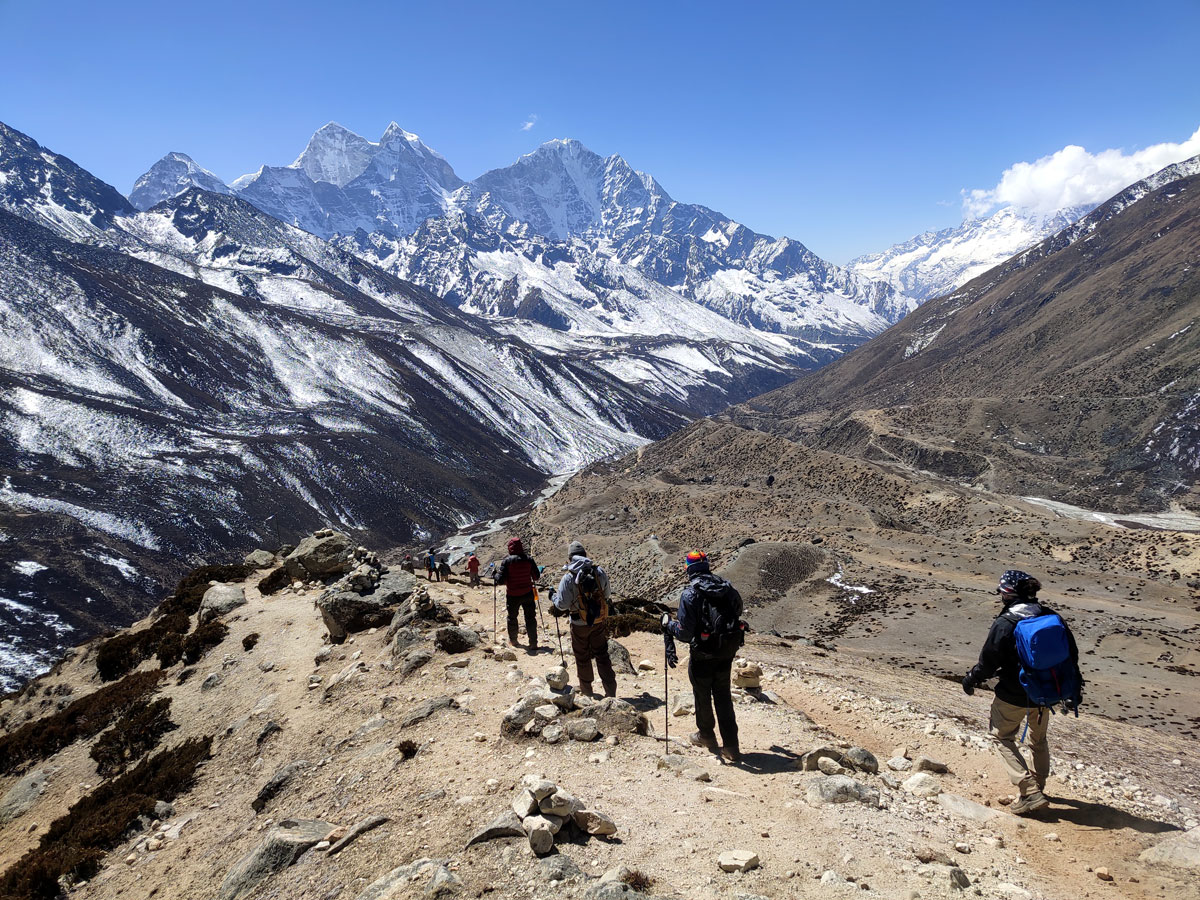
During Spring, the beauty of the Everest Base Camp Trek increases ten folds. You can get the best views of Mt. Everest, Ama Dablam, Lhotse, Nuptse, and other peaks with complete visibility.
Imagine sitting at the peaceful Tengboche Monastery and soaking in the views of distant mountains and surrounding greenery while the sound of prayer bells and fluttering prayer flags surround you.
The lower sections of the trek from Lukla to Namche Bazaar are all dotted with vibrant rhododendrons which makes the trail an absolute sight to experience. You can also enjoy a breathtaking sunrise at Kalapathhar (5,555 m).
Annapurna Base Camp Trek
A moderately difficult trek, the Annapurna Base Camp Trek is a completely mesmerizing experience, especially during the months of Spring. This trek passes through Chhomrong, Bamboo, and Machhapuchhre Base Camp before taking you to ABC.
In the lower sections of the trek, i.e. Chhomrong and Bamboo, you will be bombarded with blooming forests and majestic hues of rhododendron with snowcapped peaks in the background.
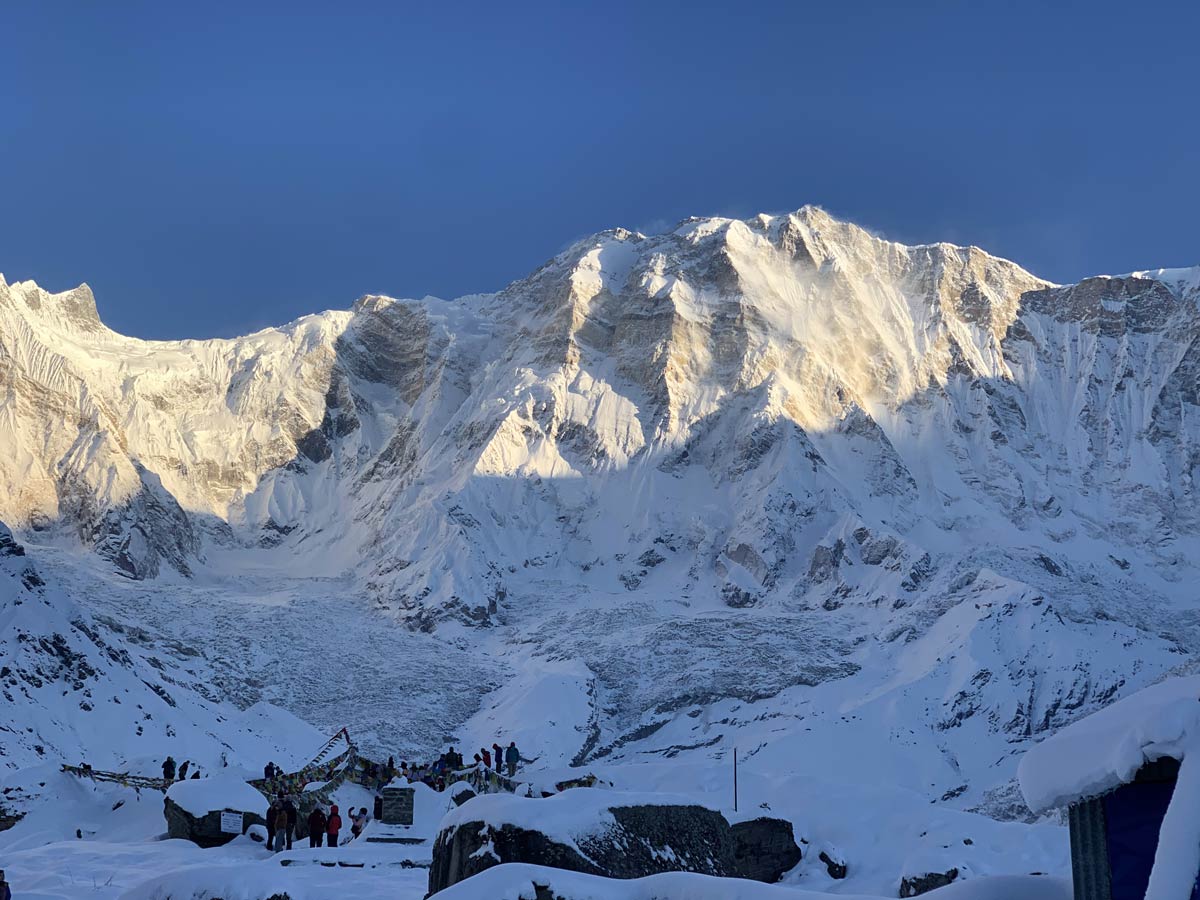
Imagine passing through those colorful forests and then reaching at the Annapurna Base Camp where you are surrounded with white beauty of snowcapped peaks all around.
The pleasant weather of spring further enhances the experience of taking a warm bath in the natural hot springs of Jhinu where you can sit and enjoy the view as you get rid of the tiredness of the trek.
Ghorepani Poonhill Trek
The Ghorepani Poonhill trek is the best option for those wanting to embark on a short yet rewarding trek despite having moderate physical fitness. It doesn’t take you to a much higher altitude and doesn’t require you to acclimatize either.
During the months of Spring (March to May), the rhododendron forests along the trail are in full bloom, creating a vibrant and colorful trekking experience. Especially the trail between Ghorepani and Poonhill is absolutely breathtaking.

Clear skies provide breathtaking sunrise views from Poon Hill (3,210m), which is one of the best sunrise points in Nepal, showcasing Annapurna, Dhaulagiri, Machhapuchhre, and other peaks.
During this trek, you can also experience the Gurung and Magar culture with their unique traditions and culinary experiences. You can also extend your trek to Ghandruk for a richer experience.
Langtang Valley Trek
Spanning over 7 to 10 days, the Langtang Valley Trek is also a good option to take during Spring season. While this trek is shorter as compared to others, it still offers a dramatic Himalayan experience.
This is also one of the off the beaten path treks which means you will get comparatively less crowd on this route. So, you get to experience the beauty of Spring while also avoiding the crowd, isn’t that a win win?
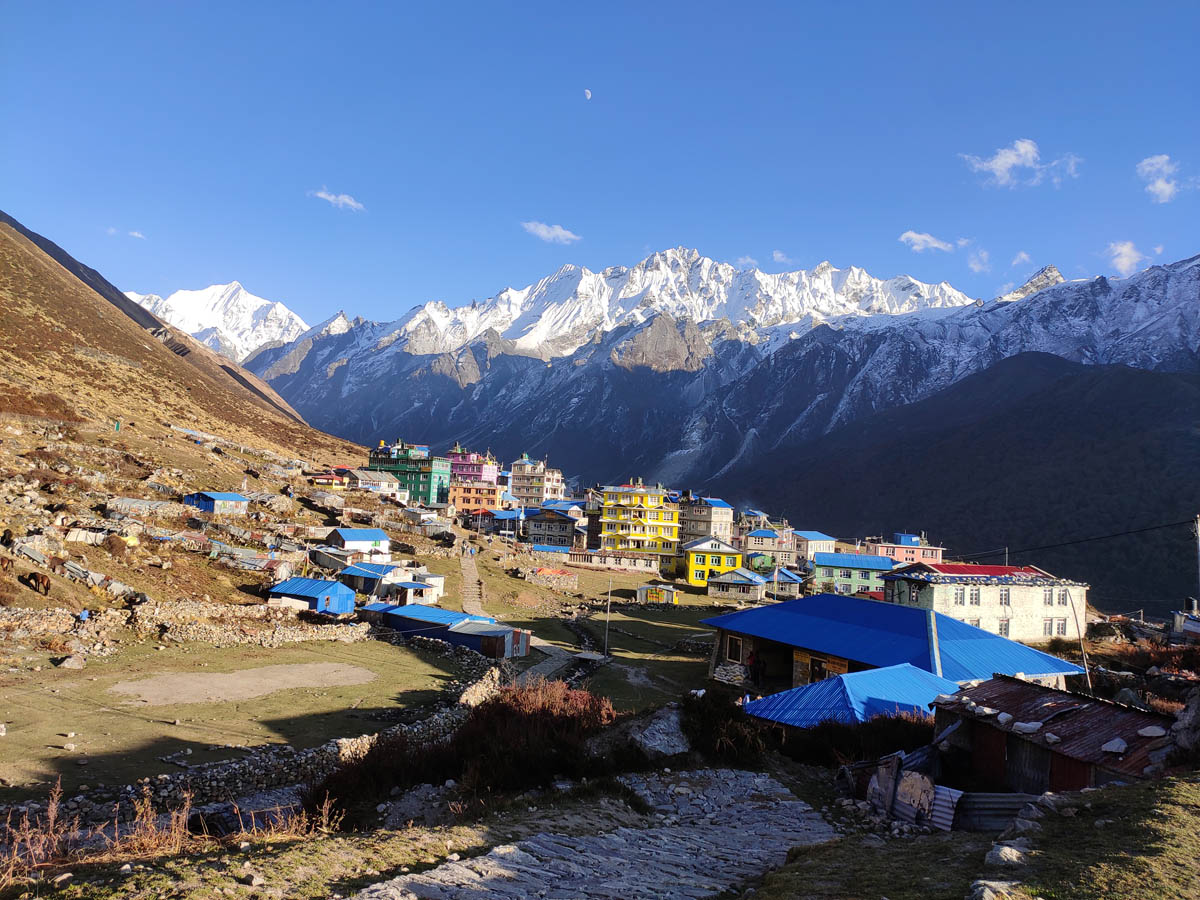
The Langtang valley bursts into life with vibrant rhododendron blooms and lush greenery during Spring, and clear skies provide excellent views of Langtang Lirung (7,227m) and surrounding peaks.
As the wildlife activity in Langtang National Park increases, you might have possible sightings of red pandas, Himalayan tahr, and langurs. You will also be able to experience rich Tamang culture and visit Kyanjin Gompa.
Upper Mustang Trek
One of the most stunning and unique trekking trails of Nepal, the Upper Mustang Trek can be a great option for trekking in Nepal during spring season as it displays the unique and rare side of the Himalayas of Nepal.
The Upper Mustang Trek is a rare chance to trek in the rain-shadow area of the Himalayas, making it suitable even when other trekking routes face unpredictable weather.
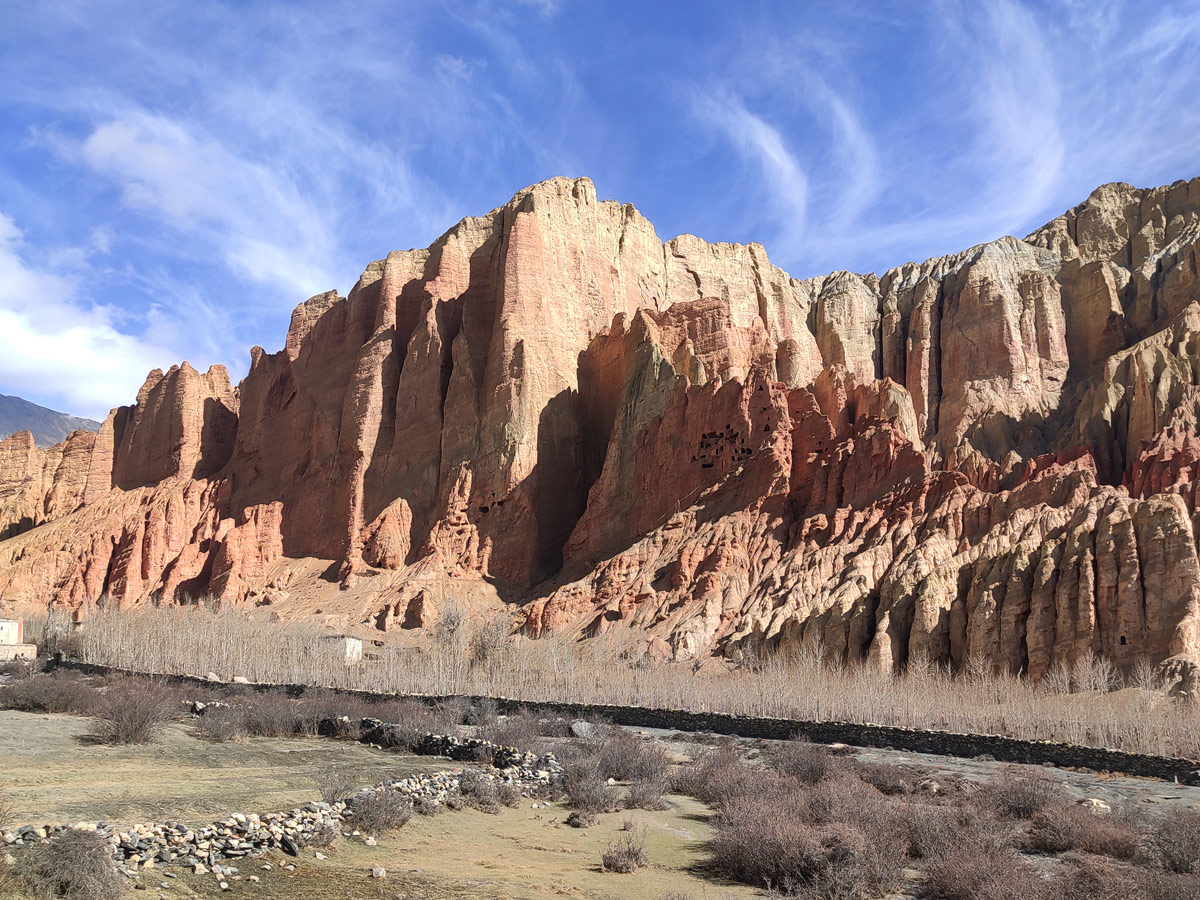
This region is also home to the walled city of Lo Manthang, also known as the forbidden kingdom, which has a rich history. Therefore, the Upper Mustang Trek is perfect for trekkers interested in history, culture, and geology as the region offers a glimpse into ancient Tibetan heritage.
Spring is the best season to explore Upper Mustang as the arid and dry landscape contrasts beautifully with the clear blue skies and mild temperatures. If you come across any winter snow, the views are even better.
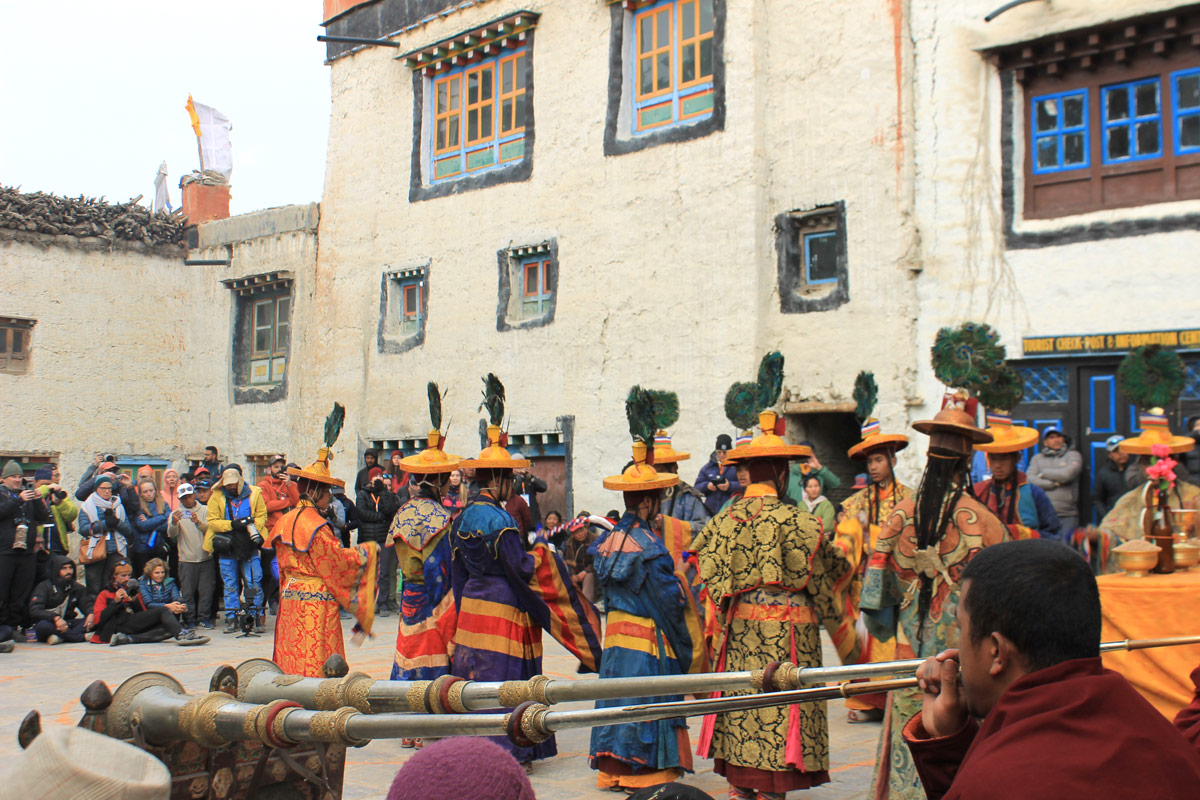
The Tiji festival is one of the biggest celebrations in the Himalayas of Nepal which is celebrated in Lo Manthang with masked dances, rituals, and many fun customs. This festival usually falls during May so spring also becomes the best time if you want to be a part of the Tiji festival.
Essentials for Trekking in Nepal
For a smooth and enjoyable trekking experience, it is best that you keep a checklist of the essentials for trekking in Nepal during Spring so that you carry everything with you and avoid any last-minute hassle.
Gear
Your packing list has to be quite thorough while trekking in Nepal during Spring. You will have a limited weight that will be carried by your porter during the trek, and you don’t want to carry anything extra.
When it comes to clothing, you should carry items that allow you for layering. Carry moisture wicking base layers, warm middle layers, and waterproof and insulating outer layers.
It is best to carry convertible clothing as it reduces the number of items you need to carry. A zero-degree sleeping bag and a fleece jacket are important, but it is better to rent them instead of buying them.
A well broken trekking shoe with a good grip is also important as some trekking routes might still have snow from the winters which can be slippery. Besides that, you need to carry other items like trekking poles, trekking lights, sunscreen, camera, and more.
A first aid kit with all important medicines should be carried. For other miscellaneous items and a detailed packing list, you can refer to packing list for trekking in Nepal.
Permits
The permits for trekking in Nepal are very important as they are the key for entering these trekking trails. While the trekking permits vary according to trekking route, below are some common permits:
- TIMS (Trekkers Information Management System): compulsory for all trekking routes in Nepal.
- Annapurna Conservation Area Permit (ACAP)
- Manaslu Conservation Area Permit (MCAP)
- Restricted Area Permit: for trekking in restricted areas.
- Sagarmatha National Park Permit
Challenges Faced While Trekking in Nepal During Spring
Although Spring is the best season for trekking in Nepal, it also comes with certain challenges. Knowing these challenges will help you prepare better for your trek and have a smoother trekking experience.
- While spring does offer much stable weather, the conditions in the high-altitude region can get quite unpredictable. So, it is best to be prepared for occasional rain showers and sudden temperature drops.
- With the advantages of trekking in Spring comes the huge crowd as most of the people trek in Nepal during Spring. So, the trails are overcrowded and swarming with trekkers, unless you go for an off the beaten path trek.
- Due to overcrowding, you might face issues like limited and sold-out accommodations. So, it is advised to make your booking in advance.
- Flights to Lukla and Jomsom can be affected by weather conditions in EBC, and other treks might also have transportation issues leading to delays or cancellations. So, you should have a flexible itinerary.
- Spring is also peak pollen season. So, if you are someone with a pollen allergy, make sure to carry antihistamines and wear a mask to limit exposure.
- Altitude sickness is a challenge during all the seasons. You should acclimatize well and climb slowly. Don’t rush your itinerary and keep enough resting time in between to prevent altitude sickness.
- Be physically prepared for the difficulties that you might encounter during high altitude treks. Engage in proper workout at least 3 months prior to the trek to get in a good shape.
